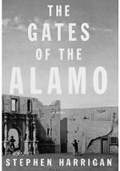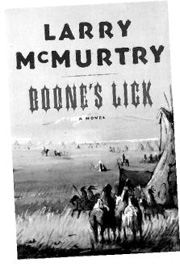BIG-BUCKS PROMOTIONS of Stephen Harrigan’s new work as “the first full-scale novel about the siege and fall of the Alamo” can’t be expected to garner a whole lot of attention outside of Texas, where that Spanish mission-cum-fortress was overrun by the Mexican army in 1836. So it’s fortunate that Harrigan, a longtime contributor to Texas Monthly magazine, doesn’t rely solely on readers’ familiarity with Texas’ independence movement to propel them through The Gates of the Alamo‘s almost 600 pages.
The Gates of the Alamo by Stephen Harrigan (Knopf, $25)
Replete with vivid personalities, both fictional and (in greater profusion) factual, this is a surprisingly affecting tale. It manages to wring tension from the 13-day Alamo assault, even when we all know that the outpost’s protectors are toast. And although Harrigan offers a frequently critical portrayal of the events and eccentrics involved in the conflict just outside of San Antonio de B鸡r (today’s San Antonio), The Gates of the Alamo does not come off as revisionist.
At the center of Harrigan’s broad narrative canvas lies Edmund McGowan, a “confident, solitary” American botanist in his mid-40s who has made a satisfying career of studying the vegetation in the Mexican “subprovince of Texas.” But in the spring of 1835 his government payments dry up, and he sets off for Mexico City to reestablish his commission. On the way, McGowan stops at the Texas coastal settlement of Refugio, where he encounters a recently widowed innkeeper, Mary Mott, and her 16-year-old son, Terrell.
The Motts have enjoyed a relatively quiet life, save for occasional threats from hostile Karankawa Indians and misdirected alligators. But like tens of thousands of other American colonists in Texas (especially those who bristle at the Mexican prohibition against slavery), they’ve been swept up in talk of revolution against, and separation from, President Antonio Lopez de Santa Anna’s government—debate that tends to overlook the uncomfortable fact that Texas is part of Mexico, not President Andrew Jackson’s United States.
Any hope Mary Mott had of avoiding the brewing rebellion goes to pieces after Terrell is seduced by a simple-headed young woman, whose subsequent pregnancy and gruesome suicide divide mother and son. Shamed and angry, and determined to prove his measure as a man, Terrell leaves home to join the ragtag “Texian” army. Most of the rest of the book finds McGowan and Mary in troubled pursuit, with all three of them winding up inside the ill-fortified, undermanned Alamo as Santa Anna and his better-equipped troops descend upon B鸡r.
Harrigan’s storytelling can be long-winded at times, overly earnest at others. But he draws on his familiarity with the Texas countryside to often lyrical effect. (“Beyond the hog wallows the prairie resumed in featureless splendor, the grasses so high that the spent seedheads brushed against the bellies of their horses.”) And his exhaustive research shows in both well-detailed battle sequences and his use of recent historical findings that contradict some long-held beliefs about the Alamo stand-off. Absorbed in Harrigan’s tale, it’s possible to imagine being among the compound’s defenders, waiting for reinforcements that never come, your agitation growing nightly as cannonades are replaced by loud barrages of Mexican music, “pointedly aggressive and malevolent.”
The Gates of the Alamo‘s principal asset, though, remains its characters: Terrell, who is both hardened and humbled in the crucible of violence; the monkish McGowan and strong-willed Mary Mott, whose growing relationship comes pitted with challenges; and a small cast of Mexicans, such as mapmaker Telesforo Villasenor, who provide readers with engaging perspective from the attackers’ side. Along with these come some well-fleshed out real-life figures, notably David Crockett, the yarn-spinning ex-congressman from Tennessee, who with a practiced politician’s ease maintains order among Alamo leaders while he keeps up spirits even among the Alamo wounded.
For those of us who didn’t previously recall much about the martyr-making bloodshed at the Alamo and whose knowledge of that confrontation had always been polluted by John Wayne’s overwrought heroics in The Alamo (1960), Harrigan’s story gives a welcome human scale to a tragedy that, over the last 164 years, has become part of the mythos of America’s manifest destiny.








